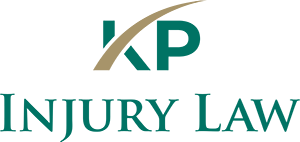
"Helping people is all I've ever wanted to do."
Kyle Peiter Founding Attorney
Car Accident Lawyer in Goodlettsville, TN
If you’ve been injured in a car crash, you’re not alone. Our law firm has fought for countless clients hurt in auto collisions.
Every case is different, results may vary depening on the facts and legal circumstances. The attorney featured on this page is licensed in Tennessee and Georgia. For a full list, please see our locations page.

"Helping people is all I've ever wanted to do."
Kyle Peiter Founding Attorney
How Long Do I Have to File a Car Accident Lawsuit in Tennessee?
In the state of Tennessee, you have just one year from the date of the accident to file a lawsuit. When this one-year statute of limitations has expired, you will not be able to take legal action.
There are some exceptions to the one-year deadline to file a claim. You could be granted more time to take action if your crash involved an out-of-state driver, for instance, or if the other driver committed a criminal offense that contributed to the accident (e.g., drinking and driving). You also have up to three years to file a lawsuit for property damage in a car accident.
It’s best to contact Goodlettsville car accident attorney Kyle Peiter as soon as possible. He can determine if you have a viable accident claim and start the process of seeking compensation.
Can I Still File a Car Accident Claim If I Was Partly at Fault?
Potentially, yes. Tennessee is a modified comparative negligence state. This means that you can still seek compensation as long as you are less than 50% at fault. If you are 50% or more at fault, you cannot seek compensation. Your percentage of liability is deducted from your damages.
For example, say that you were awarded $100,000 in damages and were determined to be 25% at fault. Because of modified comparative negligence, you would ultimately be awarded $75,000.
Why Choose KP Injury Law for Your Car Accident Case
KP Injury Law stands with victims of car accidents in Goodlettsville and the greater Nashville area. Our legal team lives by our core values of integrity, transparency, and relentless advocacy. We’ll keep you updated throughout your case, providing compassionate and strong counsel every step of the way.
- Communication and Accessibility: At KP Injury Law, we will always be accessible to you by phone, text, or email should questions or concerns arise.
- Peace of Mind Throughout the Process: Recovering from a car accident is stressful. You can trust our team to handle the paperwork, negotiate with the insurance company, and go to battle for your interests. This will give you time to focus on healing and planning for your future.
- You Pay Nothing Unless We Win: At KP Injury Law, we operate on a contingency fee basis. That means you owe us nothing unless we can reach a successful outcome in your car accident case. If we can’t settle or win a jury verdict, you don’t have to pay. It’s just that easy.
Get a Free Case Review from a Skilled Goodlettsville Car Accident Attorney
If you or a member of your family was seriously hurt in a crash, you need KP Injury Law in your corner. Kyle Peiter and his team will be relentless advocates for you. To discuss your collision with a strong and proven Goodlettsville car accident attorney, contact our law firm today.
Common Causes of Car Accidents
According to the Tennessee Department of Safety and Homeland Security, there were 686 major auto accidents in Sumner and Davidson Counties in 2024. This number included 119 fatal collisions and 567 crashes that caused serious injuries. Below are some of the most common causes of car crashes throughout the region.
Speeding and Reckless Driving
Speeding is a major factor in car accidents nationwide. Reckless behaviors behind the wheel can also contribute to serious collisions. Examples of reckless driving include tailgating, frequent lane changes, aggressively overtaking other vehicles, refusing to yield, and refusing to signal.
Running Red Lights and Stop Signs
Many collisions in intersections are caused by drivers ignoring stop signs or blowing through a red light. When people ignore traffic signals or speed up to beat a red light, there’s a greater risk of serious collisions.
Distracted Driving
Distracted driving refers to any kind of behavior that diverts attention away from the road or causes a driver to remove their hands from the steering wheel. Examples of driver distraction include texting while driving, eating while driving, rubbernecking, making a call without a hands-free kit, and looking up directions.
Driver Fatigue
Driver fatigue is a major problem among truckers, delivery drivers, and rideshare drivers with Uber and Lyft. When a driver is extremely tired, their reaction times are slower and their decision-making skills are poorer. In some cases, fatigued drivers can even fall asleep at the wheel.
Driving Under the Influence
If your vehicle is hit by someone under the influence of drugs or alcohol in Goodlettsville, car accident lawyer Kyle Peiter can hold them accountable. We can discuss DUI collision cases in more detail during a free consultation at our firm.
Vehicle Defects and Mechanical Failure
There are some cases in which design or manufacturing defects make a vehicle unsafe to operate. The same is true of faulty tires and other malfunctioning auto parts. When these flaws contribute to a car crash, our law office can hold negligent automakers and auto parts companies accountable.
Poor Road and Weather Conditions
Potholes, broken traffic signals, and roads in disrepair can make driving dangerous. The same is true of rain, black ice, and snow. If local road authorities fail to maintain roads or mitigate the dangers of adverse conditions, they could be held liable if their negligence contributed to a crash.
Types of Vehicle Collisions
Below are some different types of auto collisions, including their potential causes and some legal considerations.
- Rear-End Accidents: Rear-end crashes are among the most frequent types of auto collisions. They often occur in stop-and-go traffic or due to distracted driving and can cause neck injuries like whiplash.
- Sideswipe Crashes: A sideswipe crash is when the sides of two vehicles traveling in the same direction make contact. These kinds of crashes are common when people change lanes or merge into traffic.
- Broadside Collisions (T-Bone): When the front of one vehicle hits the side of another, the result is a broadside or T-bone crash. There’s a high risk of catastrophic injuries for anyone seated on the side of impact.
- Head-On Crashes: Head-on collisions happen when two vehicles moving in opposite directions collide. Due to the speed and force, these crashes often result in catastrophic injuries or fatalities.
- Multi-Vehicle Pileups: Accidents involving three or more vehicles are often triggered by an initial collision that causes a domino effect. Determining fault and liability in these situations can be complicated and usually requires a detailed investigation.
- Hit-and-Run Incidents: A hit-and-run is when a driver leaves the scene of an accident without stopping to exchange information or assist the injured. Hit-and-run victims may still have avenues for recovery through uninsured motorist coverage or civil claims.
What You Should Do After a Car Accident
KP Injury Law has compiled a list of eight things you should do after a car accident. It’s our way of helping Goodlettsville and our neighbors in nearby communities protect themselves in the event of a crash.
Step One: Get to Safety and Check for Injuries
Check yourself and your passengers for injuries. Even if injuries seem minor, call 911 so first responders can provide medical attention and create an official report.
Step Two: Report the Crash to Authorities
Notify local law enforcement about the collision. Remain at the scene of the crash until officers arrive to offer assistance and file a police report.
Step Three: Take Photos of the Scene
Use your phone to capture pictures and video of vehicle damage, road conditions, traffic signs, and any visible injuries. Take multiple pictures from different angles.
Step Four: Exchange Information with Other Drivers
Get the other driver’s name, contact info, license plate, insurance details, and driver’s license number for your records. If multiple drivers were involved in the crash, collect their info as well.
Step Five: Talk to Witnesses (and Get Their Info) If Possible
If anyone saw the car accident, ask for their contact info. Their account of the collision and testimony may be valuable in supporting your version of events.
Step Six: Notify Your Insurance
Report the accident to your insurance company as soon as possible. This will preserve your rights and coverage.
Step Seven: See Your Doctor for an Examination
Not all injuries are apparent immediately after an accident. Be sure to see your doctor to get checked out. Your doctor may find signs of an injury, and this medical evidence will be crucial for your accident claim.
Step Eight: Speak with a Car Accident Lawyer
Before accepting any settlement, talk to Kyle Peiter here in Goodlettsville. An experienced car accident lawyer who can help you understand your rights and maximize your compensation.
Damages in a Car Accident Lawsuit
Damages compensate accident survivors for what was lost in the crash, making them whole in the process. Most collision cases involve economic and non-economic damages. Our Goodlettsville car accident attorney can review your losses and help you see the true value of your claim.
Economic Damages in a Car Accident Claim
Economic damages are the types of accident-related losses that are easy to put a number on. Examples of economic damages from a car accident include:
- Medical Expenses: You can be compensated for the ambulance, stabilizing care, surgery, physical rehabilitation, occupational therapy, and the use of any assistive devices after an accident.
- Vehicle Damage: You can be compensated for repairs to your vehicle or the replacement of a totaled vehicle. You can also seek reimbursement for car rentals or rideshares as temporary transportation after a collision.
- Damage to Other Belongings: You can be compensated for damage to any personal belongings that were in your vehicle and damaged at the time of the accident, such as laptops, phones, tablets, and other property.
- Lost Income: You can be compensated for loss of wages due to missing work or taking leave while you recuperate from your car crash injuries.
- Lost Future Earnings: If you are no longer able to perform certain work duties, you can be compensated for lost earning potential based on the change in your career prospects.
Non-Economic Damages in a Car Accident Claim
Non-economic damages are the types of accident-related losses that are not as easy to quantify. Examples of non-economic damages from a car accident include:
- Pain and Suffering: You can be compensated for the pain you’ve endured after a collision as well as any chronic pain after you’ve recovered from your injuries.
- Diminished Quality of Life: You can be compensated for negative changes in your ability to do daily tasks and the inability to pursue past interests due to the accident.
- Loss of Consortium: You can be compensated for ways an accident has negatively affected your relationships, which includes difficulties with intimacy and companionship.
Punitive Damages in Car Accident Cases
In rare circumstances, punitive damages can be awarded in a serious collision case. These damages punish the negligent party for what they did rather than compensate the accident victim for something lost in the collision. However, there must be clear and convincing evidence that the liable party acted maliciously, intentionally, fraudulently, or recklessly.
When you work with our Goodlettsville law office, our car accident lawyer will let you know if punitive damages can be sought based on the nature of your crash.
Damages After a Fatal Car Accident
If you lose a family member in a fatal car accident, KP Injury Law can help you file a wrongful death lawsuit against the liable party. While no amount of money can match the pain of losing a loved one, we can help seek compensation to help cover funeral expenses, grief counseling, and the loss of your loved one’s income. These damages can offer stability and support during a difficult time.
Car Accidents with Uninsured or Underinsured Drivers
Most car accident claims are resolved through insurance, but if the driver is uninsured or underinsured, you may still have options. For instance, you may be able to file a claim through your own uninsured motorist coverage or by pursuing a personal injury lawsuit directly.
If you were hit by an uninsured or underinsured driver, the team at KP Injury Law can review your options and help you pick the best path forward.
Contact Our Car Accident Lawyer in Goodlettsville, TN
The people of Tennessee can count on Kyle Peiter and his team for strong legal representation after a serious collision. To set up a free case evaluation with an experienced car accident lawyer in Goodlettsville, TN, contact our law office today. KP Injury Law is ready to fight for you.
